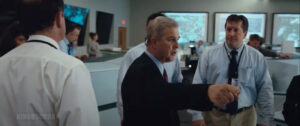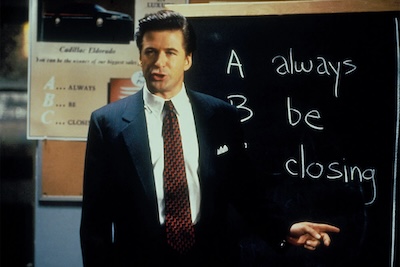The morning of September 11, 2001, I was at work. My day began at 6:30 AM. A couple of hours later, one of my highly-strung co-workers burst through the door and shouted, “A plane just hit the World Trade Center!” Like many, I assumed the aircraft was a single-engine plane that some goof lost control of, leading to a horrible accident.
Even so, I ran to the second level of our copy shop and turned on our tiny black and white TV. Bryant Gumbel was speaking on NBC. Looking at the crater created on the side of the first tower, it was hard to grasp the scale of the damage. I still believed it was a small plane.
Then the second plane hit. Everything changed. This could be no accident. Everything changed inside the store. There was almost no business. Some of my co-workers had friends and family who worked near the World Trade Center. Once they fell, the phone lines and cell towers failed too. They would have to wait from afar to learn of their safety. We brought the TV down to the main floor. People would wander in, just a few at a time. They had no copies to make. No presentations to be designed. They just leaned on the counter and watched our crummy little TV together. By the end of the day, both towers were reduced to rubble, the Pentagon had been crashed into as well. One plane went down mysteriously in a field in Shanksville, PA.
I lived under a flight path at the time. That night and for several others to follow, I would hear no planes overhead. Above me was only darkness and silence. During the day as you would see others running what seemed to be only the most necessary of errands—food, gas, work—you would pass by strangers. You would look at each other without speaking. Your eyes would lock, and you would knowingly nod at one another. But you did not speak. Nothingness.
Nothingness all day and all night. We were all lost in our shared state of disbelief. We thought we were safe. We were wrong. That pain we felt came from a place deeper than the heart.
But people can be a resilient lot. Over time we would shoulder a misguided war of choice, a president who told us to “shop,” and numerous coffins that came home on military jets. We would return to holding cookouts, watching football, throwing parties, and going to the movies, which is where I was when I saw the trailer for the latest Paul Greengrass film, a director riding high after elevating the Bourne films with the second installment of the series, The Bourne Supremacy.
Whenever possible, I show up at the movie house early. I sometimes get popcorn. I almost always buy a bottle of water. I remind myself to drink it slowly. I was in place. Middle of the theater, back beyond the halfway point when the previews started. I have no recollection of the movie I came to see, but I know the house was packed.

The final preview before the main event looked like a documentary. The cinematography was raw. The actors were unfamiliar. The chaos that ensued felt real. It’s not hard to cut a strong trailer for a two-hour movie, but this film felt different. As the audience looked on, a quiet took hold of the crowd. Within just a few moments we all knew the subject of the film. This was no ordinary hijack thriller, this was a real-life depiction. As if to punctuate that fact with authority, the title flashed abruptly at the end of the trailer: United 93 it said. A few rows ahead I heard a man say, “Too soon.”
The year was 2006.
Anyone thinking Greengrass was going to make the story of the passengers who brought the fourth and final plane aground before it reached its destination (believed to be the Capitol) did not realize that the director was using his Bourne “pass” to make a film more like the one that put him on the map just prior: Bloody Sunday. That film told the story of the massacre of thirteen Northern Ireland Irish protestors by British police in Derry, Northern Ireland in 1972. Bloody Sunday barely feels like a film at all. One does not view the film as much as bear witness to it. The raw immediacy, confusion, and turmoil Greengrass created when the Queen’s police opened fire on the raucous but unarmed crowd was a staggering experience to sit through.
“You are here,” Greengrass seemed to be saying. And my goodness how small the distance between you and the events on screen appeared to be.
United 93 is very much in the Bloody Sunday mold. There are no stars in the film. There are no conventional heroes. Even the villains are not as easy to peg as you might think. They are anxiety-ridden, and fearful, despite their fervent belief in what they were about to do. They are terrorists, certainly, but Greengrass presents them as humans, not monsters. When people commit heinous acts, there is an easy tendency to label them as less than human. As if to say, “Here be monsters,” but because they are monsters, there can’t be that many of them. It’s a notion that brings us some measure of comfort. In Bloody Sunday and United 93, Greengrass took no interest in our comfort.
The film takes its time (a full hour plus) before the hijackers take over the plane. We see passengers taking their seats, pleasantries exchanged, we overhear shop talk between the pilots and the flight crew, and we see four al-Qaeda terrorists who look just a bit more keyed up than your average nervous flier, but nothing that would catch anyone’s eye. The plane takes off. Everything is very ordinary, mundane even, until it isn’t.
The hell that breaks loose when one of the four radicals acts early in taking over the plane is sudden, lethal, and disorienting. The passengers hold onto the hope that this might be some sort of ordinary hijacking where demands will be made and then met, and a terrifying experience may one day be a story they tell friends and family members. “I was on United 93,” the tale might begin. As we all know now, this was no ordinary in-flight takeover. As the other three planes hit their intended targets (the World Trade Center and the Pentagon), eventually those on board began to understand that they weren’t on a plane, they were on a weaponized jet-liner. They will soon have to make a plan or allow their fate to be decided by those who have already made their decision. They know it, and that knowledge is terrifying.

As the in-air events continue, Greengrass deftly cuts to a befuddled and frozen military on the ground, and, most pertinently to Ben Sliney, the Federal Aviation Administration National Operations Manager. September 11, 2001, was his first day in that position. Sliney is the most central figure in the film. His efforts to gather information on the four unresponsive planes, connect to the military as the worst fears become real, and finally his historic decision to ground every aircraft in the United States and call those in the air to the ground by emergency landing. Six minutes after noon, no plane was in the air above the continental United States. Incredibly, Sliney is played by the real-life Ben Sliney. In a situation that went well beyond harried, he is the person who best holds his wits together. I can’t imagine what it was like for Sliney to relive that day in the control room. I do know that his authenticity is palpable, and his performance is pitch-perfect. Sliney is a no-nonsense man even when the situation before him is nearly impossible to wrap one’s head around. The planes are bombs. They are not under our control and the military is unprepared, so Sliney must take action.
As the film picks up its pace on the way to its inevitable conclusion, Greengrass turns up the tension on the plane to unbearable levels. The editing becomes choppier, the camera swings wildly, the desperation of the passengers to take over the plane is deeply felt, and final calls to loved ones are made from the sky. The apex of United 93 is both breathtaking and horrifying. Of course, we all know how the film is going to end. A fact that brings no relief. You find yourself hoping that somehow the outcome will turn out differently. All the while knowing the only question will be how Greengrass shows us that ending.
The beat of your heart picks up as the passengers use a food cart to break into the cockpit. The leader of the terrorists is flying the plane. He pulls down on the controls. If he can’t reach his destination, he will take that Boeing 757 and all who are on it to their death. As the passengers attempt to wrest control from their abductor, we see through the window of the cockpit as the plane dips down at a very high rate of speed. The clouds have been pierced, the grids of a city can be seen, and then there is an open patch of grass that almost seems to be coming for the plane, and just when you expect the plane to make impact with that green field, Greengrass makes a hard cut to black.
I saw the film in the theater with a large audience. For an unusually long time, no one made a sound. No one left their seat. Some whimpering could be heard. Finally, as if we were remembering how to use our legs, we gathered ourselves and nearly silently left the theater. I don’t recall a single person speaking to another about the film. There was no “So what’d ya think?” No one said to a friend “That movie reminds me of…” When I got into my blue Honda Civic, I recall letting a sigh loose from my lungs. For a moment I was curious how long it had been since I’d taken a decent breath.
United 93 isn’t so much a film so much as it is an experience. Film exists for all sorts of reasons: To thrill us, make us laugh, distract us, touch us, and sometimes teach us. I don’t know what the word is for what United 93 accomplishes. The film shows us the best and the worst of humankind. It reminds us that courage can only exist in the presence of fear. And that courage alone cannot be relied upon to change our fate. Greengrass, a Brit himself, directed this retelling of this very American event with austerity, bravery, and in complete command of his massive skill set. United 93 may be too good–it’s a barely tolerable film. I had not revisited it since the year it was released, over eighteen years ago. I don’t know that I ever will again.
However, I am grateful (if that’s the right word) for its existence. There should be no place where cinema is not allowed to go. Books, YouTube videos, and other mediums exist to remind us of what happened on that harrowing day. Yet only cinema can come close to putting us in the shoes of those on that plane and those below trying to find a solution to an impossible problem.
United 93 is enormously important. It does more than show the significance of the event, it shows us the significance of the lives on board and the likelihood that the actions of the passengers on that plane, while riddled with fear and hopelessness, likely saved lives on the ground while losing their own.
I don’t know how you place a value on that.
Was United 93 “too soon”? Maybe that’s the wrong question to ask. For some, it would always be too soon. I happen to think it was right on time.










My boss was personal friends with one of the United 93 pilots murdered that day.
Can't wait to watch this.